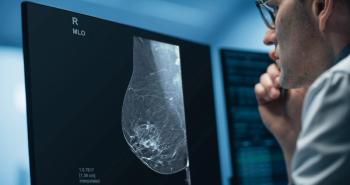
Cleveland Clinic study compares Direct Radiography to analog x-ray
Four out of five radiologists prefer DRRadiologists at the Cleveland Clinic have found that the image quality of Sterling Diagnostic Imaging's Direct Radiography technology for digitizing x-ray studies compares favorably with that of conventional
Four out of five radiologists prefer DR
Radiologists at the Cleveland Clinic have found that the image quality of Sterling Diagnostic Imaging's Direct Radiography technology for digitizing x-ray studies compares favorably with that of conventional x-ray. Clinicians at the hospital also reported that the impending arrival of DR has caused them to postpone the acquisition of other x-ray digitization technologies until DR becomes available.
The Cleveland Clinic is one of two sites, the other being Thomas Jefferson University in Philadelphia, that collected the patient data used in Sterling's 510(k) application for DR, which was submitted in August. The Cleveland Clinic focused on acquiring musculoskeletal studies, such as those of the hands, feet, knees, and pelvis, while Thomas Jefferson targeted chest and abdomen studies.
Cleveland Clinic researchers wanted to see if the DR images were of comparable quality to conventional x-ray studies, according to Dr. David Piraino of the clinic's department of radiology. Some 100 patients received both DR exams and conventional x-rays, with the clinic using a prototype 14 x 17 detector retrofitted to an older Siemens x-ray unit. Of the exams, 25 studies from 24 patients were selected for analysis.
The subjective quality of the images was the focus of the study, according to Piraino, with image quality criteria encompassing three areas: soft-tissue detail, cortical bone detail, and trabecular bone detail. Five radiologists examined the images and assigned subjective quality ratings to nine different regions of interest on each image. The ratings were then subjected to various forms of statistical analysis. One such analysis found that four out of five readers rated DR's image quality higher than that of film-screen x-ray, Piraino said.
DR's performance was all the more impressive due to the fact that the Cleveland Clinic was working with a prototype rather than a finished production device, Piraino said. Also, the researchers did not optimize x-ray exposure settings for DR; instead, they employed the same settings used in the film-screen images for consistency. The DR images were also printed to laser film, although the Cleveland Clinic applied some postprocessing enhancement to the images before printing.
"The quality of the DR images are at least comparable to film-screen, if not better," Piraino said. "We were just using an early prototype detector, so I think this is very, very promising for this technology."
In discussing their results with DR, the Cleveland Clinic team reported that the hospital had postponed the acquisition of computed radiography readers several years ago, preferring instead to wait and see how DR performed. The hospital has continued to acquire conventional x-ray systems, however. Like the Siemens system used in the study, they can be retrofitted with DR detectors when they are commercially available next year.
"We really hope that Sterling is able to make the technology such that we can retrofit most if not all of our present x-ray rooms," Piraino said. "The preliminary evidence for us from this prototype room was that it was not very difficult to retrofit it."
As a side note, Sterling representatives hinted that DR might not be limited to general projection radiography such as that conducted at the Cleveland Clinic, although the first DR product to hit the market will be for static x-ray studies. The company is examining the use of DR for fluoroscopy and mammography applications, but it is too early to determine whether commercial products will result from these efforts, according to Jeffrey Bell, marketing technical manager of Direct Radiography for the Greenville, SC, company.
"We are both developing a product and developing a business," Bell said. "We need to focus our resources on first getting a product to market, which is the device that is in evaluation now. But for it to be a business, that can't be the only product that we have, so we have to look at other areas. We have a funded group of people, in what we call advanced technology, that is examining those areas."
Newsletter
Stay at the forefront of radiology with the Diagnostic Imaging newsletter, delivering the latest news, clinical insights, and imaging advancements for today’s radiologists.




























